Afficient Academy is thrilled to announce the debut of our new grade level for Afficient English: first grade. Currently, we offer Afficient English from grade 2 – grade 9. The addition of first grade will bring us one step closer to meeting the needs of ALL elementary school students. While the core of our comprehensive, standards-aligned curriculum is the same, this early elementary grade boasts some new features designed to support our youngest learners. Some of these features include a new font, audio support, sight word practice, and a focus on foundational reading skills.
New Font for Early Readers and Writers
Students in the early-elementary grades are learning to read and write, which means that they need print that is simple, large, and easy to read. We have updated first grade with a new font that mimics handwriting. This way, students can focus on the skill at hand, and not get distracted by different ways of writing the letters of the alphabet.
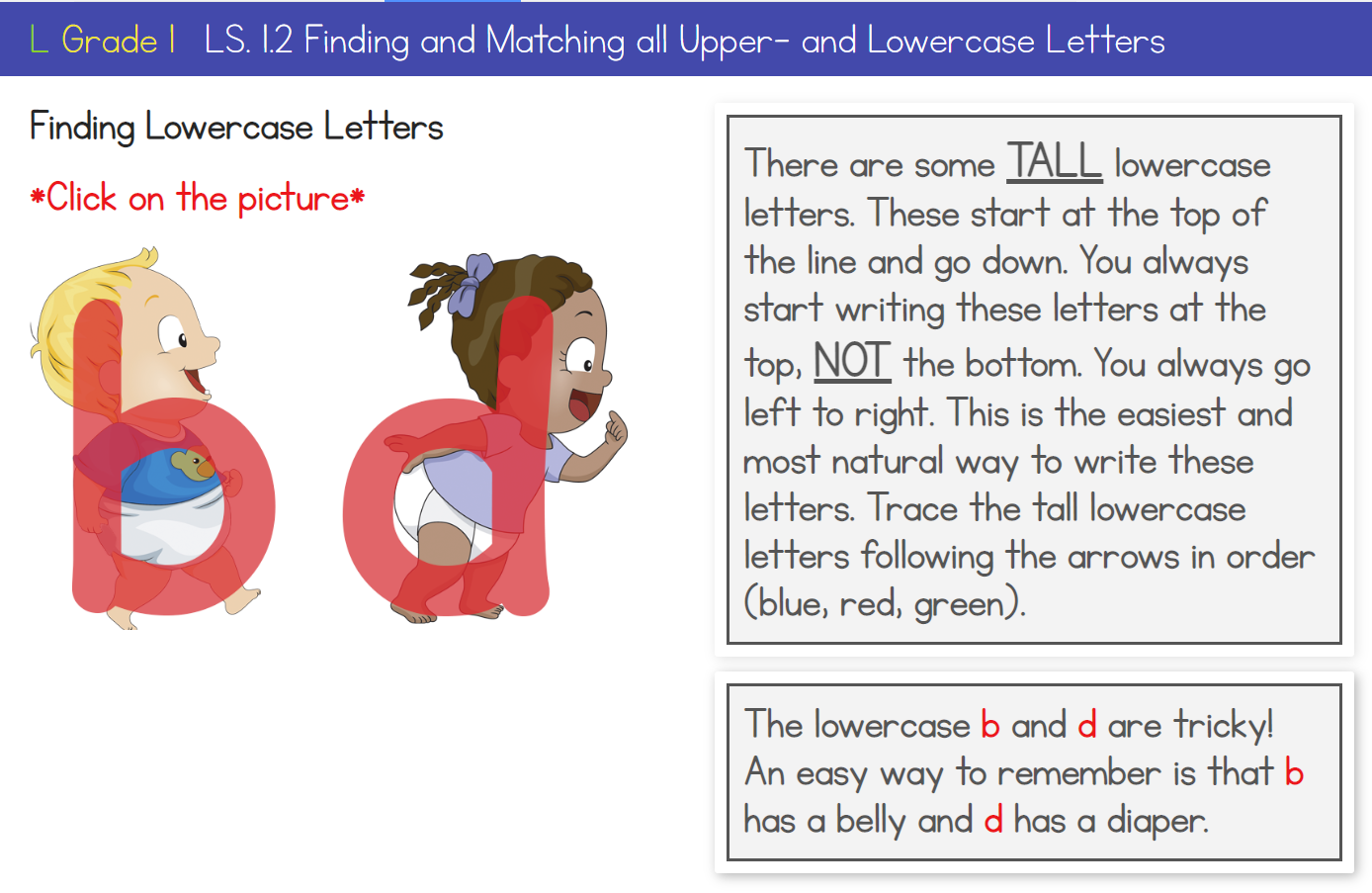
Audio Support for Developing Readers
Since first graders are in the process of learning to read fluently, we have included audio support through the demos, passages, and exercises within our early elementary grade levels.
Audio Support in Demo Lessons
While we have video support for all of our demos, we also want to give students the opportunity to refer back to our demo lessons at any time to find the information that they need. To help them navigate our lessons on their own, we have included audio and visual support using speakers that they can click to hear words and sounds, and pictures to support their reading.
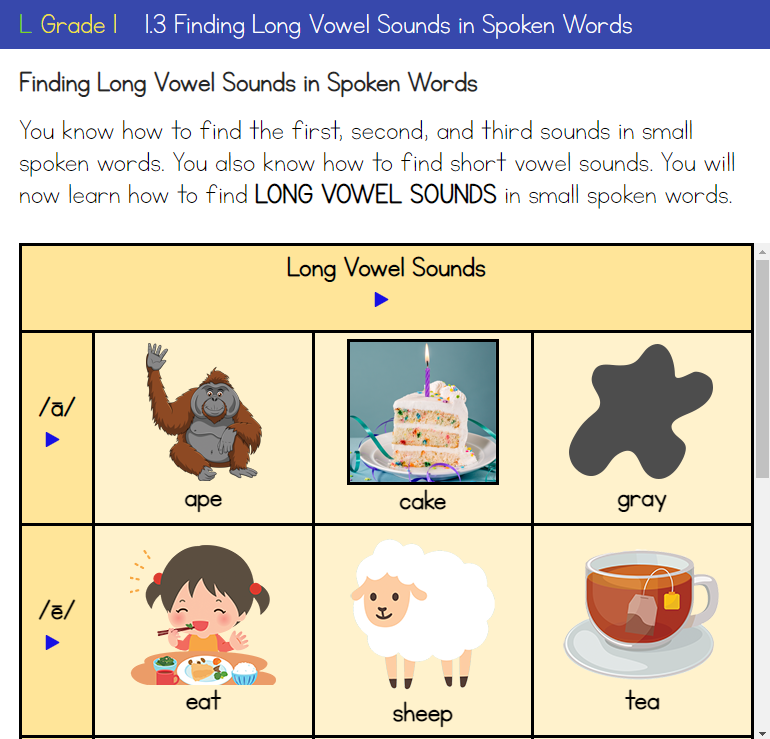
Audio Support in Reading Comprehension Passages
All of our passages are Lexile-aligned to ensure readability and comprehension. For developing readers, though, we include audio support within our reading passages to ensure that students can access the content and focus on the comprehension task at hand. All passages are read clearly and with expression, to model fluent reading.
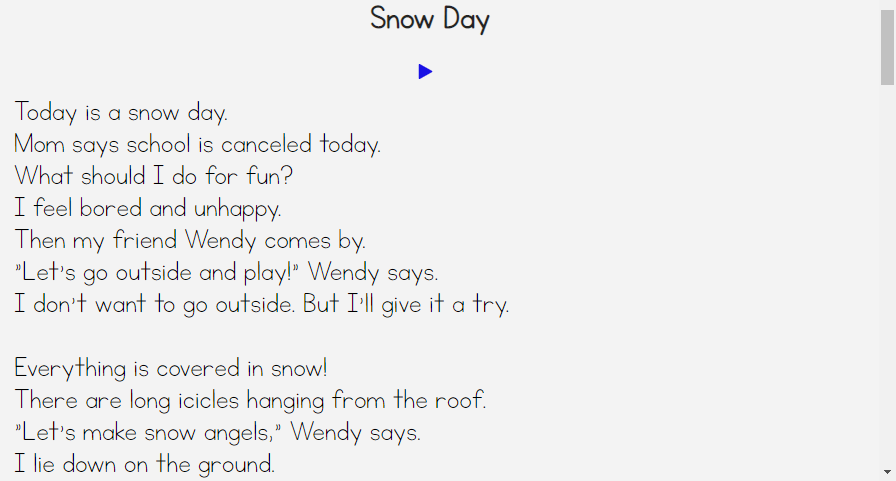
Audio Support in Exercises
Finally, we include audio support throughout all of our exercises, particularly for directions and any special sounds. Again, this helps the students focus on the sorting task at hand, rather than laboring over words that they may not yet be familiar with. We also include images whenever possible to ensure readability and student engagement.
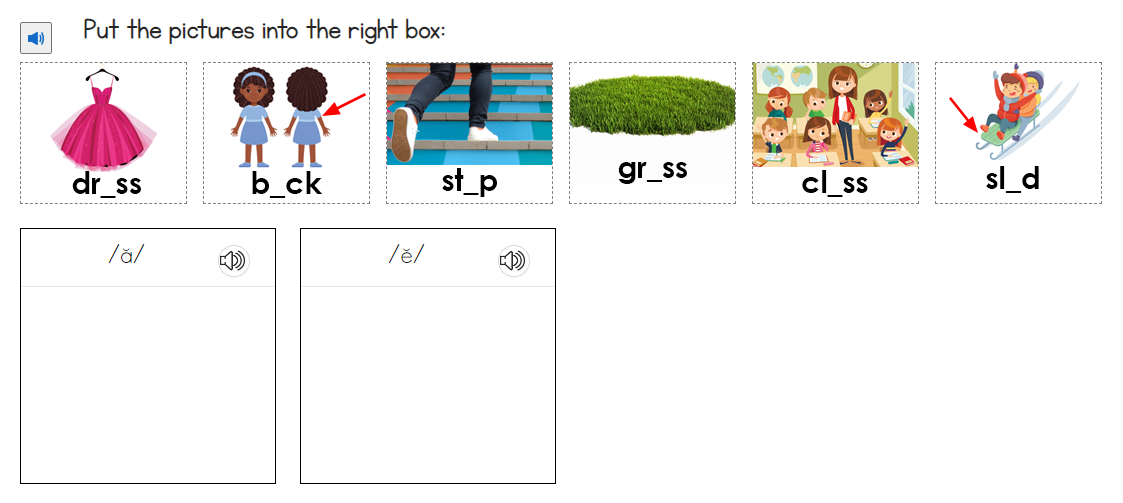
Sight Word Practice in the Vocabulary Module
For early elementary, we decided to focus on explicit, systematic, and sequential instruction of sight words, also called high-frequency words. These words are the MOST COMMON words read in the English language, and thus they should be known by SIGHT to ensure fluent reading. In our early elementary grades, we cover the first 300 sight words and practice them in a variety of ways.
New Flashcards
Our flashcards have been updated to include example sentences and eye-catching images to help students remember how to use these common words.
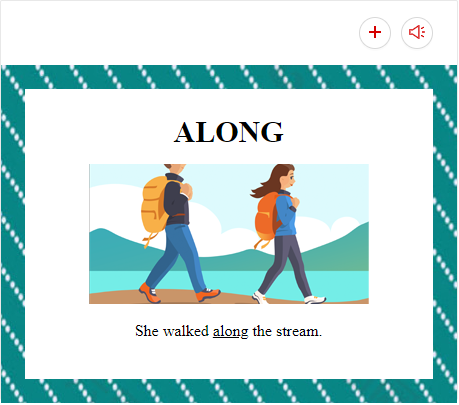
Word Recognition Practice
After reviewing flashcards, we reinforce the sound-spelling connection between the sight words by asking students to identify the word that they hear.
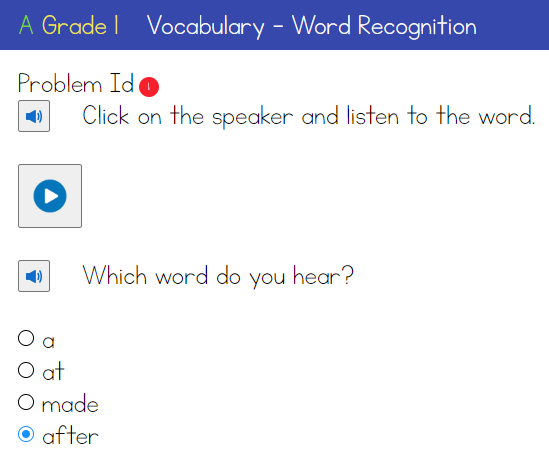
Sentence Completion
Finally, students practice identifying which sight word completes a short sentence correctly. If they identify the wrong word, as you can see below, they are offered auditory support.
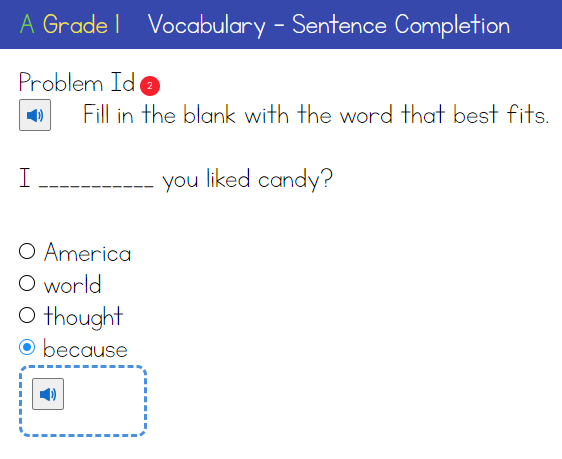
Explicit Teaching of Foundational Reading Skills
What sets early elementary apart from other grades is the strong focus on foundational reading skills. We have chosen to cover ALL foundational reading skills, from phonemic awareness, to explicit phonics, to fluency practice. The skills build upon each other in a research-based and sequential manner.
Phonemic Awareness
The first step in achieving reading fluency is to have strong phonemic awareness skills. Phonemic awareness is the ability to identify and manipulate SPOKEN SOUNDS in words. This means that before being exposed to print, students must be able to distinguish sounds irrespective of their letters. In the exercise below, you can see that students must click a speaker to hear a word and then identify the vowel sound that they hear.
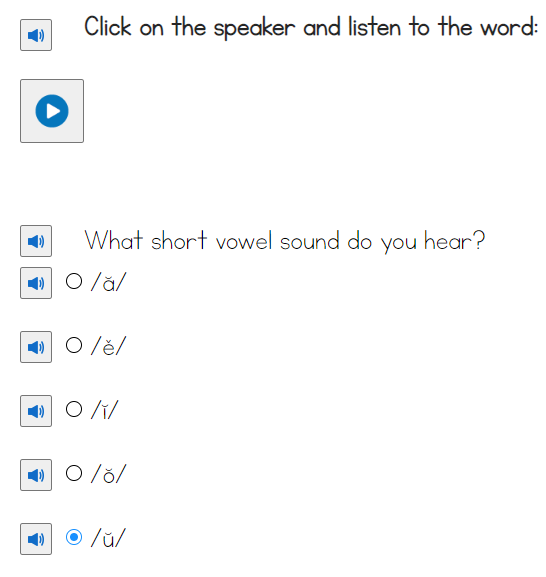
Phonics
The next step in achieving fluency is explicit phonics instruction. Phonics is the ability to connect sounds to the letters on a page. In the lesson below, students have learned about digraphs (or two letters that come together to make an entirely NEW sound). The students need to distinguish between words that are spelled with sh- vs. ch-. Since these sounds are similar, the students may struggle with hearing the differences between the two digraphs.
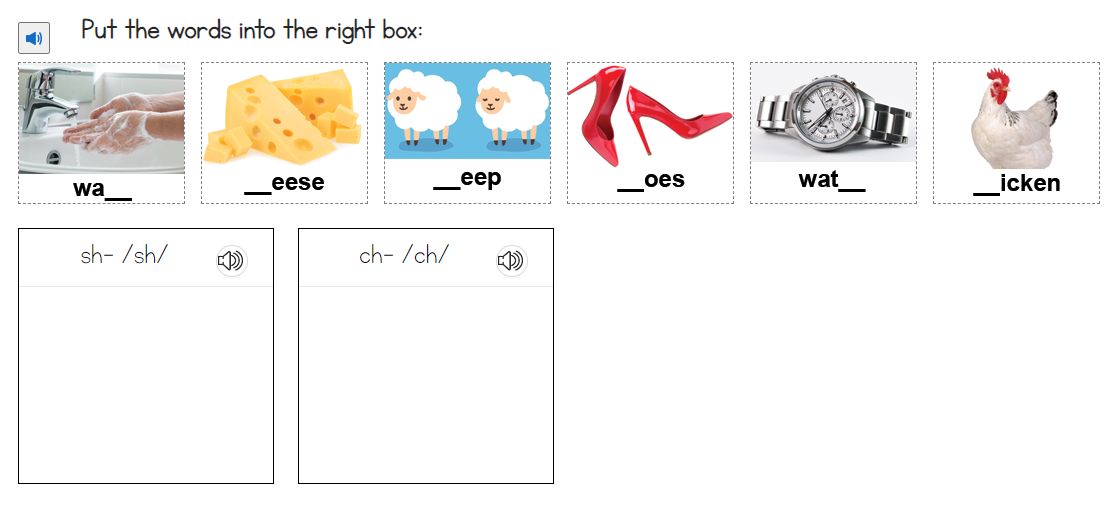
Fluency
Finally, we include skills that also help students achieve fluency, or read with appropriate speed, accuracy, and expression. In the lesson below, students learn to break words apart into “chunks” so they can read faster. They learn to break about the beginning blend fl- from the word family -at and put them together. This is faster than trying to read the words sound by sound: f-l-a-t.
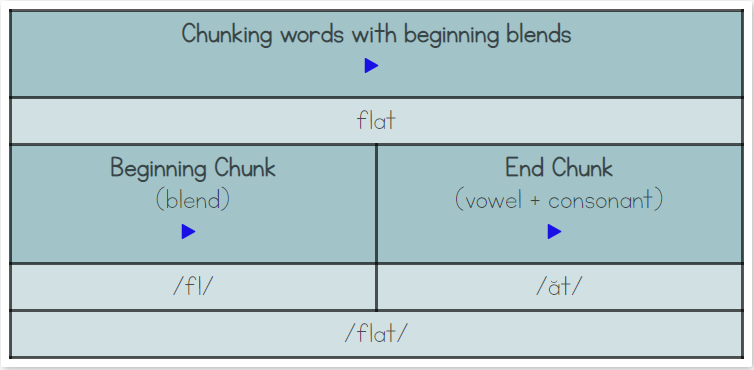
What’s Next for Afficient English?
With the introduction of first grade, you will also see numerous updates to our second-grade curriculum, including second-grade phonics and developmental spelling skills. We also will be debuting our Kindergarten product later this month, featuring concepts of print and phonological awareness skills. Finally, we will also be piloting a new diagnostic test within the next few weeks. Schedule your FREE diagnostic test to enroll in Afficient English today!





